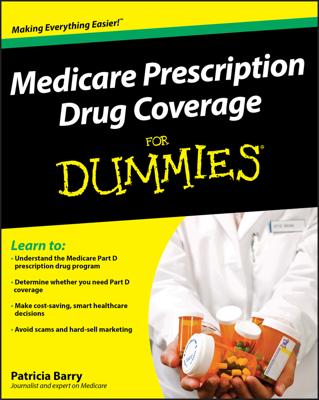Medicare Extra Help has five levels of eligibility. The first three levels take only your income into account. But all three depend on your having already qualified for other assistance programs, which is why you automatically qualify for Extra Help, too. In that case, you receive a letter from Medicare confirming it.
But at levels four and five, you must apply by filling out a form that asks questions about your income and assets — mainly savings. After reviewing your application, the Social Security Administration will send a letter saying whether you can receive Extra Help.
The following shows how you qualify for Extra Help and what you'd pay for drug coverage at each level in 2017:
- Level one: You have full Medicaid benefits and live in an institution, such as a nursing home. You qualify for full Extra Help automatically, paying no premium or deductible and nothing for your medications.
- Level two: You have full Medicaid benefits and income no higher than $1,025 per month ($1,373 for couples). You qualify for full Extra Help automatically. You pay no premium or annual deductible. You pay $1.20 (for generic drugs — inexpensive copies of brand-name drugs) or $3.70 (for brand-name drugs) per prescription and nothing at the catastrophic level of coverage. (The catastrophic level kicks in if and when the total cost of the drugs you've received since the beginning of the year reaches a certain level, and then you pay no co-pays.)
- Level three: You have full Medicaid benefits, and your income is higher than the amounts in the preceding bullet; or you receive SSI; or your state pays your Medicare premiums. You qualify for full Extra Help automatically. You pay no premium or annual deductible. You pay co-pays of $3.30 (generics) or $8.25 (brands) per prescription and nothing at the catastrophic level of coverage.
- Level four: Your income is no higher than $1,377 per month ($1,847 for couples), and your savings are under $8,890 ($14,090 for couples). You qualify for full Extra Help but must apply for it. You pay no premium or annual deductible. You pay $3.30 (generics) or $8.25 (brands) per prescription and nothing at the catastrophic level of coverage.
- Level five: Your income is no higher than $1,528 per month ($2,050 for couples), and your savings are under $13,820 ($27,600 for couples). You qualify for partial Extra Help and must apply for it. You pay a partial premium (depending on your income), no more than $82 for an annual deductible, and 15 percent of the cost of your drugs or the co-pay charged by your plan (whichever is the lesser amount). If you reach the catastrophic level of coverage, you pay co-pays of $3.30 (generics) or $8.25 (brands) or 5 percent of the cost (whichever is greater) for each prescription.
So are you looking at those income limits and figuring that yours just misses the boat? Here's some important advice: Apply anyway! The limits are higher in some circumstances than those shown in the preceding list — for example, if you have some earnings from work that aren't counted, or live in Alaska or Hawaii, or have dependent relatives living with you.

